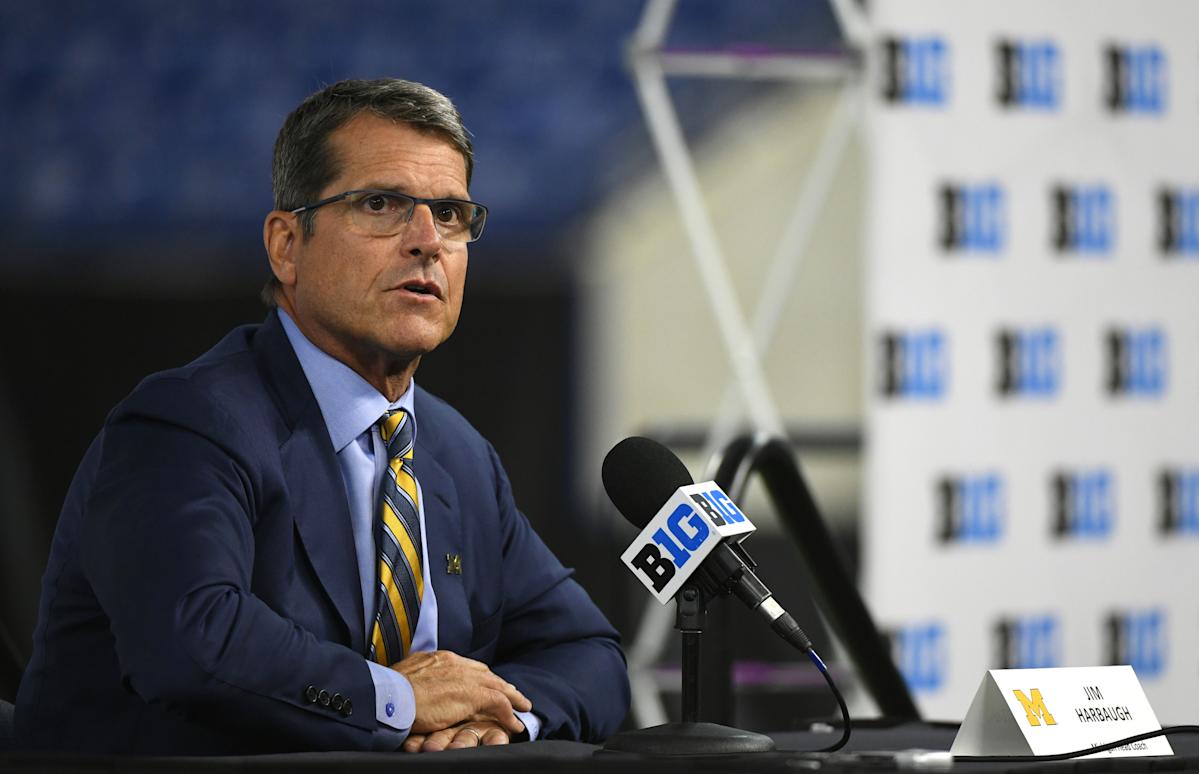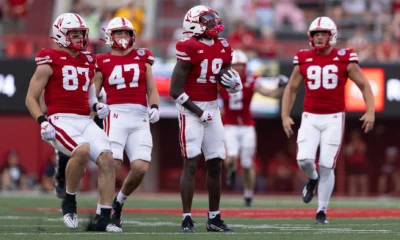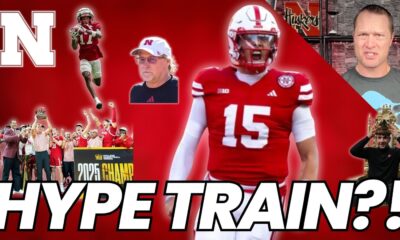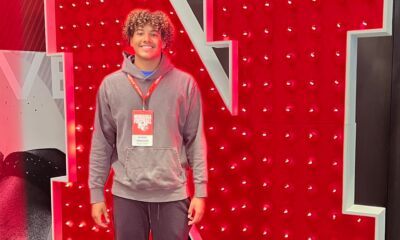
There are no more off years in college football’s coaching carousel. In past seasons, we’ve tried to rationalize that austerity would eventually pause the annual coaching overhauls.
Those points have been invalidated by schools so desperate to keep up that they’re unafraid to pay coaches giant sums not to coach. Massive buyouts aren’t preventing schools from firing coaches. Change is now seen as a sign of progress. When it turns into a step back, few of the leaders who forked over the buyout money are around to deal with the fallout.
A pandemic that crippled budgets didn’t really slow things down in 2020, as 17 jobs opened and schools like Auburn ($21 million), Texas ($15 million), Arizona ($7 million) and Vanderbilt (unknown, but Derek Mason was extended in 2019) all fired their coaches. Tennessee is attempting to not pay Jeremy Pruitt’s $12.6 million after firing him, which may lead to stiffer NCAA penalties and will certainly result in lawyers running up-tempo billable hours.
So let’s just predict it now – this will be a frenetic, historic and volatile year in the coaching carousel. Just like the next year. And the one after that.
What’s so predictive of masses of movement this year is the number of high-end market drivers looming – Michigan, USC, Nebraska and Virginia Tech among them. While the SEC is trending quiet, it’s rarely quiet in that corner of the world.
Here’s a comprehensive analysis of what jobs could open around college football this year as we brace for coaching churn in perpetuity.
Big Ten
Jim Harbaugh – 49-22 entering Year 7
No school in recent memory has contractually placed its coach on the hot seat as nakedly as Michigan did after last season. Harbaugh went from one of the five highest paid coaches in the country at more than $8 million to one of the four lowest paid coaches in the Big Ten at $4 million.
Michigan also has an affordable buyout of just $4 million to fire him after this season. In many ways, the deal is the envy of any athletic director on the cusp of firing their coach, as Harbaugh agreed to terms friendly to Michigan’s bottom line.
With no established quarterback, severe personnel issues in the secondary and a new defensive coordinator with limited college experience, there’s plenty of reasons to be skeptical Michigan can emerge from a rut of uninspired football. The Wolverines are 2-12 against Top 10 teams under Harbaugh, 0-5 against Ohio State and gave up an average of 59 points in the past two games against the Buckeyes. (They didn’t play in 2020.)
Michigan’s haphazard and lazy recruiting for much of Harbaugh’s tenure should further manifest itself this season. Michigan has lost an average of four games the past four years – including going 2-4 last season – and there’s little evidence it’ll lose less than that this season. It’ll be the tenor of games at Wisconsin, at Penn State and home against Ohio State that will ultimately determine Harbaugh’s fate.
Michigan athletic director Warde Manuel’s contract was extended in February until June of 2026 with a raise to $1.1 million. It’s clear who Michigan’s leadership has faith in going forward. The overhauled Michigan staff has delivered a recruiting jolt and some familiar offseason cliches about better energy, connectivity and schemes.
The best way to read Michigan’s overhauled staff is improving the product and recruiting if Harbaugh doesn’t make it. New assistants like running backs coach Mike Hart – the school’s all-time leading rusher – and Ron Bellamy, a former Michigan player and prominent local high school coach, could be attractive holdover candidates to a new coach.
Bottom line: Unless the results change drastically on the field, Harbaugh is veering off the exit ramp in Ann Arbor. Expect the Matt Campbell/Luke Fickell/PJ Fleck/Bill O’Brien/Tony Elliott debates to eventually drown out another forgettable November.
Scott Frost – 12-20 entering Year 4
No school has been as defiantly committed to paying egregious buyouts as Nebraska, where the cash giveaways to departed coaches have been the athletic department’s most relevant claim to fame for the past decade. The school spent nearly $28 million in buyout money over a 15-year span, according to reports last year.
Since then, Nebraska has even shown a rare commitment to paying the people who are paying the wrong people. Former AD Bill Moos was allowed to walk away with $3 million after – cough, cough, cough – retiring from his job. Giveaways are practically part of the school’s muscle memory.
Nebraska certainly appears ready to part ways with Frost and, potentially, engage in a protracted legal battle to lessen his $20 million buyout. The news coming out via the Action Network that the NCAA is investigating Nebraska for holding illegal workouts and illicit use of analysts doesn’t bode well in any way for Frost, who is 9-17 in Big Ten play.
Frost getting dragged in front of the media by new athletic director Trev Alberts to address the story is also a bad sign. Frost is chilly even in good moments, and his temperament will be closely watched this year.
During Frost’s time at Nebraska, the program has failed to establish anything close to an identity. There’s been far more misses than hits, including a home loss to Troy, and losses to Ohio State by an average of 38 points the past two years.
If Nebraska loses its Week 0 opener at Illinois, it’s hard to see Frost surviving until Christmas. Frost also can’t let Nebraska get run off the field in its final three games – Ohio State, at Wisconsin and Iowa. (Nebraska lost 115-58 combined the last time it faced each.)
Bottom line: Any manufactured optimism for this season appeared to exit with the potential NCAA issues. Alberts was brought in for a reason, and continuing the status quo of irrelevance wasn’t one of them.
PAC-12
USC
Clay Helton – 45-23 entering full-time Year 6 (record includes two interim stints)
While Nebraska has led the nation in buyouts, USC’s administrative distinction the past decade has been leading the country in federal investigations. While athletics officials and an assistant basketball coach accepted bribes and USC’s name kept coming up in court and on documentaries, the football program spiraled further from its Pete Carroll glory days.
Helton has been USC’s most successful coach since Carroll, besting Ed Orgeron (interim), Lane Kiffin and Steve Sarkisian for that title. He has reached two New Year’s 6 bowl games and, most important, brought class, stability and character to a program that needed it.
But Helton has gone 18-13 the past three years, and it’s abundantly clear to nearly everyone in the sport that he’s not a national championship caliber coach. If he can’t take a significant step toward the playoff this year, especially without Oregon and Washington on the regular season schedule, expect this to be Helton’s final season.
After the incompetence of Pat Haden and the arrogance to hire the hopelessly overmatched Lynn Swann, USC finally has a solid leader in athletic director Mike Bohn. The parting gift of Swann is that he overpaid and extended Helton by such an outrageous amount that it has been nearly impossible for the school to fire him.
Since Bohn arrived, USC has nearly tripled the size of the program’s recruiting department and armed Helton with the staff and resources to attempt to maximize a program that should be competing with Alabama, Oklahoma and Ohio State. Not losing to Utah, BYU and getting blown off the field by Iowa.
Helton went undefeated in the regular season last year, finishing 5-1 after a loss to Oregon in the hastily arranged Pac-12 title game. It’s also still expensive, but not untenable, to fire him as his buyout is in the neighborhood of $10 million with two years remaining after this one.
Helton’s teams are consistently and embarrassingly undisciplined, as they have yet to finish higher than No. 114 nationally in penalty yards per game in his five years as full-time coach.
Bottom line: With the price tag finally dipping to palatable levels, it’d be wise for Helton to win the Pac-12 and keep winning it to show the results of the school’s new investment and direction. Not only does Helton need to keep his job, his performance needs to justify an extension.
Chip Kelly – 10-21 entering Year 4
It’s never boring with Chip Kelly. The coach who helped usher in an era of relentless up-tempo has executed a slow burn during his second head coaching act in college football. Kelly is 10-21 after three years at UCLA.
His seat would be hotter, perhaps, if not for an unusual buyout that goes from $9 million to zero on Jan. 15 of 2022. Folks in Lincoln can empathize with UCLA, which is still paying Jim Mora through January of 2022. (At least Steve Alford got off the books earlier this year).
UCLA showed some promise in finishing 3-4 last year. UCLA should be a bowl team this season, with quarterback Dorian Thompson-Robinson headlining 20 returning starters, a high-end offensive line and excellent tight ends. (Kelly winning in 12 personnel? Somewhere, Dennis Dixon shakes his head in wonderment.)
UCLA plays LSU in Week 1 in the Rose Bowl after a Week 0 appetizer visit from Hawaii. That early stretch should dictate the tenor of where the Bruins are going and the realities of the roster’s talent. UCLA seems poised to win this season, but Kelly’s future could get dicey with no bowl game.
Bottom line: With the bar set so low – 3-9, 4-8, 3-4 – progress is easily attainable. But another slog of a season could lead to more buyout chatter in Westwood.
Herm Edwards – 17-13 entering Year 4
On performance alone, Arizona State should be fine. But Edwards’ tenure in Tempe is in flux amid an NCAA investigation into the football program allegedly arranging and hosting visits during the pandemic. Those in the industry believe it’d be surprising if Edwards coaches ASU next year considering the blatant nature of the allegations, his age (67) and the fact that he ended up at ASU largely because his former agent was the athletic director.
Edwards’ staff is falling apart as three assistants are already suspended with pay. The coach he chose to consistently promote and groom to succeed him – defensive coordinator Antonio Pierce – is a central figure in the NCAA’s investigation. Recruiting has fallen apart, as ASU is ranked 11th of 12 schools in the league.
Does Edwards want to endure the slog of an NCAA investigation? If even a fraction of the accusations in the dossier that alleges violations are true, it will be easy to fire Edwards for cause. A quiet retirement around Thanksgiving looms as the easiest exit. The focus would then shift to Anderson, who hired his old client and watched the program get engulfed in scandal. Would ASU president Michael Crow give Anderson another shot at a hire? (Crow extended him through 2026 earlier this year and has consistently bungled athletic decisions with the Pac-12 and on campus.)
ASU leads all power conference schools in major NCAA infractions. It appears poised to pad that total. Edwards’ best shot at surviving is winning, but even with a strong roster that prospect appears less certain amid this season’s turmoil.
Bottom line: There’s a much better chance Herm Edwards is behind a television desk in 2022 than on the sideline. There’s still ambiguity how that will play out as a season of promise is on the horizon.
Worth monitoring in Pac-12
Nick Rolovich – 1-3 entering Year 2
There’s no performance issues here less than five games into Rolovich’s tenure. Rolovich’s status is worth monitoring because his situation appeared to draw the attention of the office of Gov. Jay Inslee. This began after Rolovich stated earlier this year he has chosen not to take the COVID-19 vaccine because of “reasons that will remain private.”
Rolovich has since said he’ll comply with the state of Washington’s vaccine mandate for those working at state colleges and universities. His options include taking the vaccine or getting a religious or medical exemption. It’s unclear what option he’s choosing, but the mandate says those who aren’t fully vaccinated by Oct. 18 could risk losing their jobs.
Rolovich missed attending Pac-12 media day in person because all attendees were required to be vaccinated. That situation prompted statements soon afterward from president Kirk Schulz and athletic director Pat Chun that they encourage vaccination. (Chun has publicly supported Rolovich despite disagreeing with him.)
The situation has thrust Washington State under a searing spotlight. If Rolovich is fired without cause, he’d be owed nearly $4.8 million.
ACC
Justin Fuente – 38-26 entering Year 6
There are few signs more glaring that a coach is in trouble than when an athletic director has to address the media to explain why he isn’t firing the coach. Whit Babcock did that last year, issuing the memorable line: “We must and will do better.”
If UNC blows Virginia Tech out on the season’s opening Friday, the spiral could begin soon after. In the absence of Florida State and Tech atop the ACC the past few years, UNC has stormed ahead in the standings and recruiting rankings.
Tech finished 5-6 last year and didn’t go to a bowl for the first time since 1992. The Hokies are 19-18 the past three years, and Fuente has failed to consistently recruit and develop quarterbacks or foster a compelling identity.
The school extended Babcock earlier this month, which means he’ll either be around to replace Fuente or extend him. Fuente’s buyout remains high – $10 million at season’s end or $7.5 million after Dec. 15 – but few places have such an overt win-or-bust ethos as Virginia Tech this season.
Bottom line: Fuente seemed an inspired choice when Babcock hired him in 2015, but he has never really found sustained success after starting 19-8. This feels like parting ways could be best for both parties.
Worth monitoring in ACC
Dino Babers – 24-36 entering Year 6
After going 10-3 in 2018, Syracuse has nosedived into oblivion as fast as any program in college football. The Orange went 1-10 last year, undercut by opt-outs and an offense that appeared designed around giving the ball back to the opposition as quickly as possible.
Syracuse quarterbacks were sacked 88 times the past two years, the most in college football. If Syracuse can’t adjust to find a better way to protect Tommy DeVito or transfer Garrett Shrader, it will be more of the same.
As Babers enters Year 6, the most puzzling part of his tenure is that a coach and play-caller known for deft touch with quarterbacks – he coached Jimmy Garoppolo at Eastern Illinois – has struggled so much at that position. The most telling stat of Babers’ tenure comes from Syracuse.com, which reported Syracuse is 1-13 in games started by its backup the past two years. The Orange can’t keep a quarterback healthy and have failed to provide depth in that room.
It’s hard to consider Babers on the hot seat, as his buyout remains north of $12 million at a school that lacks an SEC-caliber budget and fat-cat donors. Expect that contract to come under more scrutiny this year if Syracuse ends up in the bottom of the ACC again. Athletic director John Wildhack is dealing with an ugly women’s basketball scandal, and there’s still the looming departure of Jim Boeheim, who’ll turn 77 in November.
Another embarrassing year puts the school in a tough spot.
David Cutcliffe – 74-88 entering Year 14
It’s always thorny handling the exit of transformational coaches. Cutcliffe has been a boon for Duke, methodically pulling it out of the depths of Division I football and creating a model for future coaches. He made Duke football relevant and respectable after decades of doldrums.
Cutcliffe led Duke to six bowls in seven years, a remarkable run considering that Duke hadn’t been to a bowl since 1994 or won one since 1960. The historical context of Cutcliffe’s accomplishments should never be overlooked.
Cutcliffe will turn 67 in September, and Duke has gone 7-16 the past two years. Duke has a manageable schedule with Charlotte, North Carolina A&T, Northwestern and Kansas in the non-conference and it misses Clemson in league play. Perhaps Cutcliffe can spin off Duke’s 2-9 season and make another bowl.
But the twilight for Cutcliffe is here. And how to handle his eventual exit, whether this year or beyond, will be a significant part of first-year athletic director Nina King’s tenure now that the transition from Mike Krzyzewski to Jon Scheyer is underway in men’s basketball.
BIG 12
Matt Wells – 8-14 entering Year 3
Texas Tech hasn’t had a winning season since 2015, and Kliff Kingsbury’s promise as an NFL coach – he was 8-8 last year – still lingers over Lubbock after his firing.
As Tech scrambles to find safer conference ground, having a winning football program still remains the most alluring quality a program can have. Tech has been pedestrian under Wells, who finished 2020 by winning two of three and brings in quarterback Tyler Shough, who started for Oregon last season. He’ll be coached by new offensive coordinator Sonny Cumbie, so requisite changes have been made.
There was some booster momentum to oust Wells last year before cooler heads prevailed. Instead, offensive coordinator David Yost was sent packing and athletic director Kirby Hocutt lit the torch under Wells’ chair for 2021: “We must get better. It’s time.”
Patience has never been a Texas Tech administrative trait, and it appears to be running out here. A loss to open the season against Houston at NRG Stadium could re-shake the hornets’ nest in Lubbock.
Button line: Tech tends to air on the side of aggression over patience.
Worth monitoring in SEC
Ed Orgeron – 45-14 entering Year 6 (Fifth year as full-time)
The chances of Orgeron descending to Gene Chizik 2.0 territory revolve more around the off-field tumult at LSU than the on-field product.
LSU is engulfed in a campus-wide sexual assault scandal, and many of the allegations that have emerged pre-date Orgeron’s time as coach. There is some potential trouble for Orgeron, who was added as a defendant in a Title IX lawsuit in June and has been accused of ignoring sexual harassment allegations. (Including those by a 74-year-old woman.)
Orgeron’s buyout would be in the neighborhood of $17.1 million at the end of this year, a universe away from the tens of millions guaranteed to Nick Saban, Jimbo Fisher, Dabo Swinney or Ryan Day.
If there’s a total meltdown on the field after a 5-5 season in 2020 or more damning allegations off it, it’d be much easier for LSU to part ways with Orgeron than many of his contemporaries.
This promises to be the quietest year in the SEC in recent memory, but the potential of an LSU opening could prompt a chain reaction.
Bottom line: Winning trumps everything at LSU, where the school’s actions have dictated that ethics are gauged by the win column. Orgeron better keep winning.
Smaller leagues
AAC
No overt hot seats here. Two jobs worth monitoring.
Both Temple and Houston need to quickly change the program’s trajectory. But any potential movement there would be tempered by large buyouts for a Group of Five school. Temple is tricky to read, as the school has sputtered on its AD search and appears rudderless more than 15 months after Pat Kraft left for Boston College. Coach Rod Carey is 9-11 entering Year 3, and the buyout to fire him appears untenable at $8 million.
Same with the Cougars’ Dana Holgorsen, who at 7-13 has underwhelmed at Houston. The D’Eriq King intentional benching that undercut Holgorsen’s early tenure and enabled the quarterback’s transfer was a clear mistake. Last year, the Cougars went 3-5 with wins over Tulane, Navy and South Florida. They lost to both ranked teams they played by an average of more than three touchdowns. With realignment looming in Texas, there will be pressure for Houston to show more progress. Holgorson’s buyout of more than $5 million remains significant.
Conference USA
This projects as the most active of all the leagues in college football.
A potential Butch Davis retirement at FIU, Rick Stockstill’s $5 million buyout looms over his twilight at Middle Tennessee, Dana Dimel’s struggles at UTEP (5-27) and Seth Littrell’s back-to-back four-win seasons at North Texas leave the league the subject of much speculation.
North Texas is one of the best Group of Five jobs in the country. FIU and Middle Tennessee would get a lot of interest because of location. Expect more movement in smaller leagues like C-USA, as they didn’t have the budgets – or stomachs – in the pandemic to rally for buyouts.
Independents
The jobs at UConn and New Mexico State are hard enough because of geography. The lack of conference affiliation makes them more difficult.
New Mexico State’s Doug Martin enters the final year of his contract. He’s 23-64 entering his ninth year at the school, which includes a bowl win in 2017 that’s the school’s first since 1960.
UConn’s Randy Edsall was brought back to push the program to where he brought it – the Fiesta Bowl in the 2010 season. Instead, he’s 6-30. His contract was just extended, and he’ll have two more years after this one.
MAC
There are two glaring jobs in the MAC that need to show improvement this year. Thomas Hammock is just 5-13 at Northern Illinois, which is considered by many to be the best job in the conference. After an 0-6 season in 2020, the Huskies will need considerable improvement.
Akron’s Tom Arth is 1-17 after two years. While Akron is as financially compromised as any school in the country, some signs of progress are needed.
Mountain West
There are no coaches in danger of getting fired.
Sun Belt
Progress needs to be made at Georgia Southern and Troy or change looms as a possibility.
At Troy, the Trojans have endured back-to-back losing seasons under Chip Lindsey (10-13). Those followed three straight double-digit win seasons under Neal Brown.
Chad Lunsford (27-18) has brought Georgia Southern to bowl games in three straight years, but the job is worth monitoring as the school still hasn’t found itself in league title contention. It’s a clear-cut notch behind Coastal Carolina, Louisiana and Appalachian State in the league title conversation.
After starting 5-19 through two seasons, it would behoove Texas State’s Jake Spavital to show some tangible progress.
More from Yahoo Sports:

Must See
-


Football
/ 5 months agoHuskers Fight Hard but Fall Short Against UCLA
LINCOLN – The Nebraska Cornhuskers gave it their all on Saturday, with standout efforts...
-


Football
/ 6 months agoGAMEDAY: Nebraska Set to Face Undefeated Indiana in Key Big Ten Showdown
Bloomington, IN – It’s Game Day, Husker Nation! Nebraska (5-1, 2-1 Big Ten) returns...
-


Football
/ 6 months agoBlackshirts Shine as Nebraska Tops Rutgers 14-7 on Homecoming
Lincoln, NE – Nebraska’s Blackshirt defense played a starring role in the Huskers’ 14-7...
By Chris














You must be logged in to post a comment Login